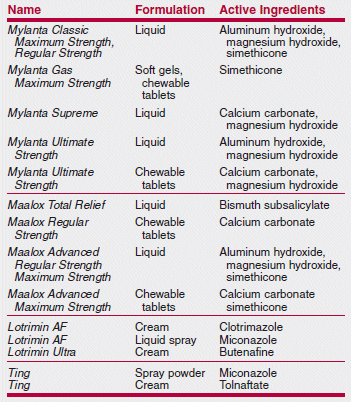Matching articles for "Aluminum hydroxide"
In Brief: Only The Name Remains The Same
The Medical Letter on Drugs and Therapeutics • June 28, 2010; (Issue 1341)
A Medical Letter subscriber was surprised to discover that a new Citracal product contained not only calcium citrate, but also calcium carbonate. Citracal Plus Bone Density Builder actually contains more...
A Medical Letter subscriber was surprised to discover that a new Citracal product contained not only calcium citrate, but also calcium carbonate. Citracal Plus Bone Density Builder actually contains more calcium carbonate per tablet than calcium citrate (240 mg vs. 60 mg). Another Citracal product, Citracal Plus Heart Health, also contains more calcium carbonate than calcium citrate. Many clinicians prefer calcium citrate because it can be taken with or without food, while calcium carbonate must be taken with food for optimal absorption. Other familiar over-the-counter (OTC) names also contain some surprises among their ingredients, as shown in the table below.

>Many well-known brand-name OTC products no longer contain only or necessarily any of their original ingredients.
Download: U.S. English
Phosphate Binders
The Medical Letter on Drugs and Therapeutics • February 13, 2006; (Issue 1228)
Hyperphosphatemia in end-stage renal disease can lead to secondary hyperparathyroidism, renal osteodystrophy, metastatic calcification and cardiovascular mortality. addition to dietary restriction of phosphorus...
Hyperphosphatemia in end-stage renal disease can lead to secondary hyperparathyroidism, renal osteodystrophy, metastatic calcification and cardiovascular mortality. addition to dietary restriction of phosphorus and hemodialysis, drugs that bind phosphates in the gut are usually needed as well. Aluminum hydroxide is no longer recommended for long-term use because of concerns about its toxicity.
